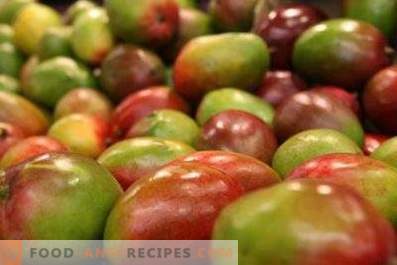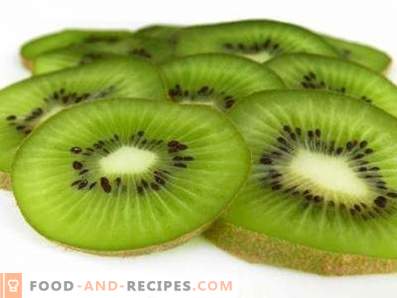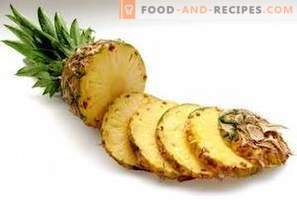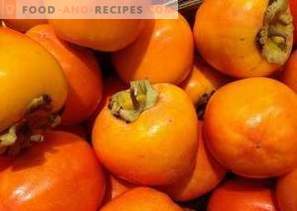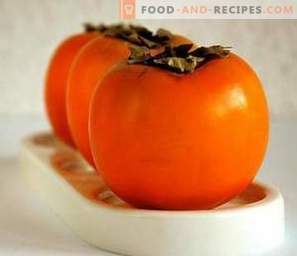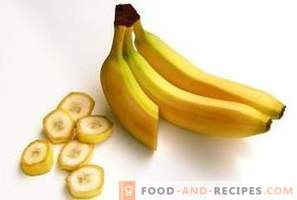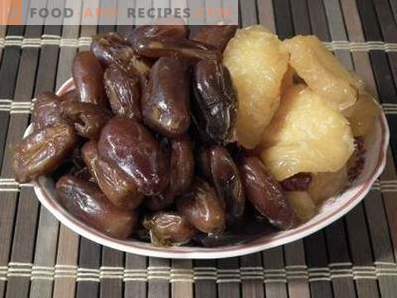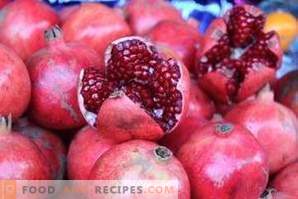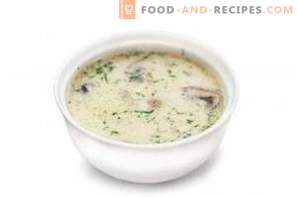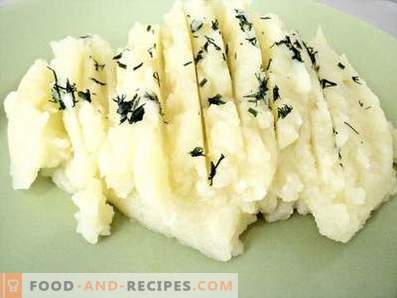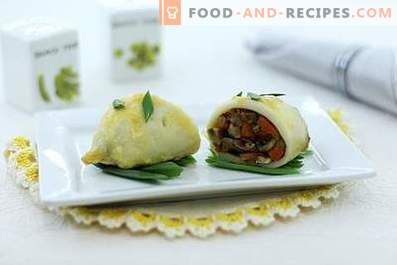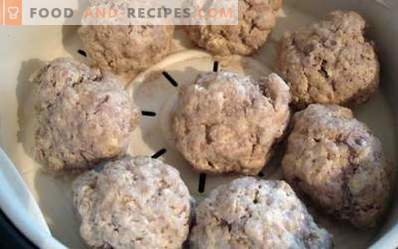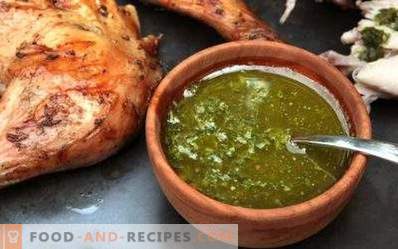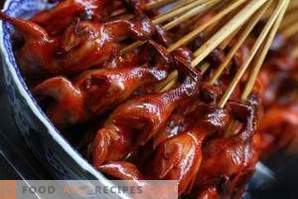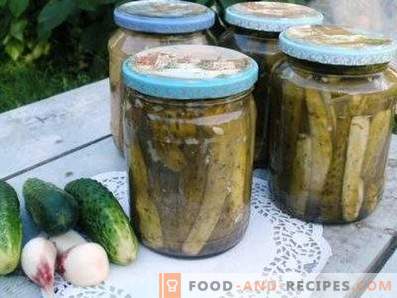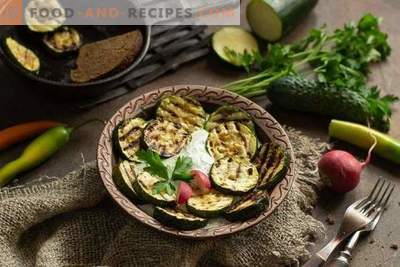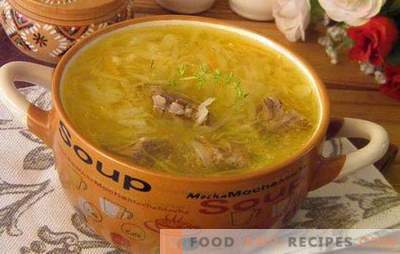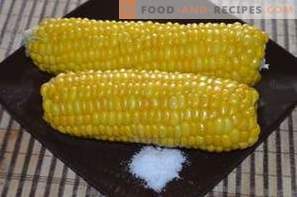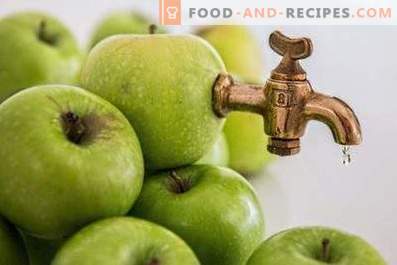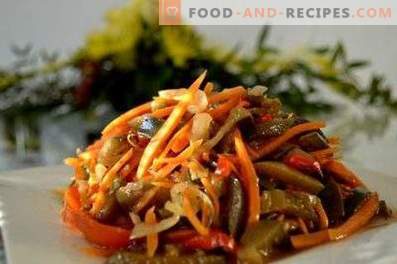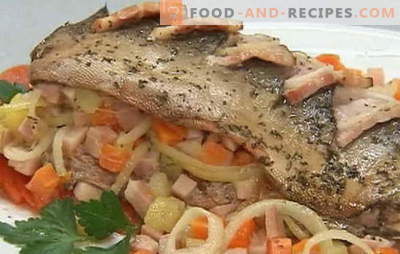
Mango belongs to the genus of tropical plants of the sumach (anacardia) family. Similarly, the sweet fruit of this tree is called. For culinary use, Indian mango is most often used (Mangifera indica, mango tree, or magnifer Indian). This fruit has become a national symbol (one of several) for India and Pakistan. This particular plant is usually described as the main type of mango cultivated by man. In the tropics (particularly in India), the fruit is called the fruit of the gods. In this country, culture has been produced since ancient times, and nowadays all the states of the tropical belt are engaged in mango cultivation.
The history of mango is about eight thousand years. In India, a popular legend about giving this tree to Buddha, the god Amradarik. The mango references were found in the works of the poet Amir Khusran (the possibility of using it in the immature form is described). In the XVI century, the emperor Akbar ordered to plant in the state of Bihar a garden of one hundred thousand mango trees. Now in India, almost 75% of the gardens is occupied by this particular culture. Somewhat later than the era of the great geographical discoveries, the Portuguese brought mango to East Africa. In the middle of the 18th century, Barbados residents and Brazilian citizens met with fruit. After another century, mango reached the shores of the United States and gained popularity also in Australia, southern Africa and the Middle East.
The territory of distribution of mango is rather small. Wild mangoes can be found between the state of India Assam and Myanmar in the rain forests of the tropical belt. In Sanskrit, the word “mango” is translated as “great fruit.” But the production of this fruit is widespread in the territory of all countries with a climate that is optimal for mango growth: India, Mexico, Cuba, China, Australia, Spain. Indian manufacturers are considered the main exporters of the product. There are new varieties of mango, capable of developing and bringing in crops, in Krasnodar and in the Stavropol Territory. A tall mango tree can grow from 10 to 30-40 meters with a crown diameter of up to 12 meters. The leaves that appear have a pinkish yellow color, as they develop, they turn dark green. Small mango flowers are colored in pink or white, and their smell is very similar to lilies. Each tree produces about 300-1000 flowers, but the fruits appear only from large inflorescences (no more than 2 mangoes for each group of flowers). After flowering 4-6 months pass, and then you can observe the process of fruit ripening. Each fruit has the shape of an oval or egg and can weigh from 250 g to 1 kg. Ripening occurs on long stems of the plant. The color of the mango does not have to be monotonous, and on the skin of one fruit one can often find combinations of possible skin colors: orange, red, yellowish, green. The taste of yellow or orange sweet pulp is often compared with pineapple or peach, although it is quite specific, “mango”. The smell of fruit can be compared with a combination of melon, apricot and pink aromas. All sorts of side dishes are made from the unripe sour fruits. With a certain sensitivity, you can catch the smell of turpentine in the mango flavor, which is an integral feature of the representatives of the sumach family. Depending on the degree of domestication and variety, the smell of turpentine can be felt to a greater or lesser extent. The best known mango varieties do not have this drawback. The yield of mango juice from the fruit is 60-85%. Large mango seed is located inside the fruit, like other stone fruit. Its length is from 5-6 to 10 cm, and its mass reaches 50 g. The yield of mango orchards is from 50 to 75 centners of crop per hectare. Numerous mango varieties have been described mainly in India and Indonesia (1500 and 900 varieties, respectively). In contrast to the dessert varieties served to the table, technical ones are produced from which canned food is made. They try to make a mango tree indoor (bonsai), but in this case it will be able to please the eye only with the refinement of forms, but it will not bear fruit.
Food and vitamin value of mango
In unripe fruits there is a lot of starch, but in ripe mango this component has already turned into a number of carbohydrates: glucose, sucrose, maltose. The fruit of the fruit contains a lot of polyphenols, which are able to neutralize the action of free radicals and delay the aging process. Triterpene and several other components of the mango are struggling with tumors and provide their prevention.
Nutritional value 100 g mango:
- 0, 523 g of proteins
- 0, 274 g of fats
- 15, 261 g of carbohydrates
- 1, 838 g of dietary fiber
- 82, 072 g of water
- 0, 065 g of saturated fatty acids
- 14, 905 g of monosaccharides and disaccharides
- 0, 512 g of ash
Vitamins per 100 g of mango:
- 0, 435 mg of beta-carotene (vitamin A provitamin)
- 38, 842 mkg retinol equivalent (A)
- 27, 753 mg of ascorbic acid (C)
- 0.054 mg of thiamine (B1)
- 0.056 mg riboflavin (B2)
- 0, 164 mg of pantothenic acid (B5)
- 0, 139 mg of pyridoxine (B6)
- 14, 274 μg of folic acid (B9)
- 1, 142 mg of tocopherol (E)
- 0, 586 mg of vitamin PP
- 0 982 mg of niacin equivalent (PP)
- 4, 236 mcg of phylloquinone (K)
- 7, 657 mg of choline
Mango Energy Value
The energy value of the described fruit is relatively small. The degree of maturity determines the exact caloric value in 100 grams of the product - from 60 to 70 kcal. The nectar of the Asian apple contains less calories - 42 kcal per 100 g. Such high indicators of the energy value of mango are related to the patient’s glucose concentration in the pulp. This essential compound is an indispensable source of energy. At the same time, compared with similar sweet fruits, mango still has low calorie values, so the fruit can be safely included in the diet.
- The caloric value of 100 g of mango is 67 kcal.
- The caloric value of 100 grams of dried mango is 314 kcal.
- The caloric value of 100 g of canned mango is 73 kcal.
There are several compounds in mango that affect our feelings. For example, a fruit affects the action of the hormone contained in the blood of leptin, associated with hunger and regulation of fat accumulation. With the inclusion of mango in the diet significantly increases the destruction and elimination of fats from the body. At the same time, fatty accumulations serve as an additional source of energy, which becomes an additional incentive to enhance their splitting. The active ingredients of the fruit lower the appetite and create a feeling of fullness after consuming the mango. It helps slimming do without extra snacks, being on a diet. Potassium, which is more in mango than in bananas, prevents the retention of excess fluid in the human body. B vitamins stimulate the liver, accelerating the removal of toxins from the body.
Macro and trace elements in the composition of mango
Mango is known for its high content of macronutrients and trace elements. Among the first are magnesium and phosphorus, which strengthen both the internal systems of the body and hair, teeth, nails. The trace element composition is rich in iron, zinc and even manganese and selenium, the content of which is quickly replenished after eating one mango.
Macroelements per 100 g mango:
- 10, 458 mg of calcium (Ca)
- 156, 407 mg of potassium (K)
- 9, 383 mg of magnesium (Mg)
- 11, 823 mg of phosphorus (P)
- 2, 153 mg of sodium (Na)
Trace elements per 100 g of mango:
- 0, 138 mg of iron (Fe)
- 045 mg zinc (Zn)
- 110, 936 mkg copper (Cu)
- 0, 028 mg of manganese (Mn)
- 0, 651 mg selenium (Se)
Useful Properties of Mango
- 12 amino acids are found in the mango pulp, many of which are irreplaceable and can enter the body only from the outside. In the fruit are carotenoids, responsible for the orange or yellow-orange color of the inner part of the fruit. For example, compared with mandarin, fruits contain 80% more carotene.
- The combination of vitamins C, E, fiber and carotene forms the environment for the prevention of cancer (this refers to the tissues of the intestine, pancreas and prostate, cervix, breast, stomach and some other organs).
- Thanks to its antioxidant properties, beta-carotene in combination with ascorbic acid strengthens the immune system, reduces the risk of infectious diseases, and mitigates the effect of negative environmental factors.
- The fruit is conducive to relieving stress, improves mood, keeps the whole body in shape.
- Mango is known for its antipyretic ability. Fruits facilitate the functioning of the cardiovascular system. Doctors advise you to take mango to combat inflammation of the gums and mouth; the same remedy deals with colds and sharp pains in the stomach. With the help of the leaves of the plant you can make your teeth cleaner and whiter.
- Phytotherapists in Europe prescribe leafy decoction of mango to diabetics. It is noticed that the use of mango causes an improvement in the work of blood vessels and pancreas. If the broth is prepared from the semi-dry leaves of a mango tree, then it can be used as a cure for hypertension, skin hemorrhages and varicose veins.
- Folk healers in India found that the healing properties of mango help even with such dangerous diseases as the plague and cholera. Ripe fruits have a laxative and diuretic property.
- Mango juice is used in the treatment of acute dermatitis, and the seeds - to alleviate the condition of asthmatics.
- Experiments confirm that mango extract affects the level of so-called. “Bad” cholesterol. This is due to the fact that the natural components of the fetus actively regulate metabolism and accelerate it.
- In the tropics, people eat mangoes almost regardless of the degree of fruit ripening. In Indian cuisine, the popular “lablab” dish of unripe mango pieces marinated in salt, spices and fatty oil is popular. It is oily and sharp, but for a healthy organism its use is not contraindicated.
- Mango bones are used to make valuable oils with rare fatty acids. If you make a hair mask out of mango (or pulp) stones and hold it for about 15 minutes, then the hair will become more lush and will stop cutting over time.
Contraindications to the use of mango
In contrast to many sweet exotic fruits, mangoes do not require long addiction. However, this fruit (especially in large quantities) should be used with caution.
- Consuming mango in combination with alcohol or milk leads to indigestion and, in most cases, diarrhea. Between the use of these products should sustain an interval of about 2 hours.
- Fruit cannot be tasted with diabetes, because the mango pulp is rich in maltose, fructose and sucrose.
- It is not uncommon for a mango to cause an allergy not because of its flesh, but because of the skin. Such people clean mango gloves and calmly use it.
- Overeating mango (especially immature) is fraught with severe consequences: irritation can develop on the mucous membrane of the stomach or respiratory tract.
- Overdose of ripe mangoes is dangerous for intestinal, gastric and skin diseases.

